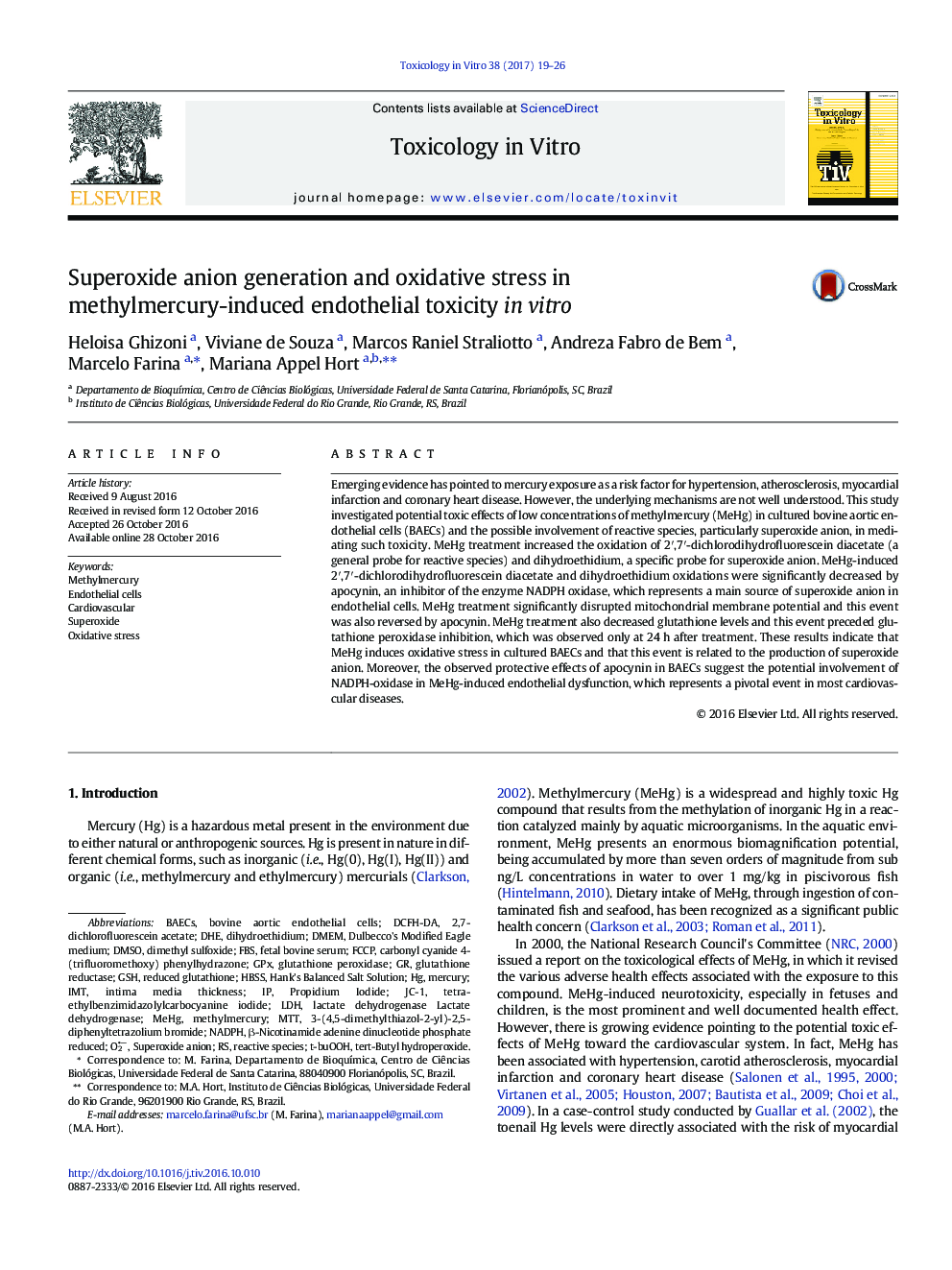| کد مقاله | کد نشریه | سال انتشار | مقاله انگلیسی | نسخه تمام متن |
|---|---|---|---|---|
| 5562751 | 1562707 | 2017 | 8 صفحه PDF | دانلود رایگان |
- MeHg induces RS production, mitochondrial and thiol status disruption in endothelial-cultured cells (BAECs).
- Apocynin, a NADPH oxidase inhibitor, prevents MeHg-induced oxidative stress and mitochondrial damage in cells.
- NADPH oxidase might be involved in MeHg-induced toxicity in BAECs.
Emerging evidence has pointed to mercury exposure as a risk factor for hypertension, atherosclerosis, myocardial infarction and coronary heart disease. However, the underlying mechanisms are not well understood. This study investigated potential toxic effects of low concentrations of methylmercury (MeHg) in cultured bovine aortic endothelial cells (BAECs) and the possible involvement of reactive species, particularly superoxide anion, in mediating such toxicity. MeHg treatment increased the oxidation of 2â²,7â²-dichlorodihydrofluorescein diacetate (a general probe for reactive species) and dihydroethidium, a specific probe for superoxide anion. MeHg-induced 2â²,7â²-dichlorodihydrofluorescein diacetate and dihydroethidium oxidations were significantly decreased by apocynin, an inhibitor of the enzyme NADPH oxidase, which represents a main source of superoxide anion in endothelial cells. MeHg treatment significantly disrupted mitochondrial membrane potential and this event was also reversed by apocynin. MeHg treatment also decreased glutathione levels and this event preceded glutathione peroxidase inhibition, which was observed only at 24Â h after treatment. These results indicate that MeHg induces oxidative stress in cultured BAECs and that this event is related to the production of superoxide anion. Moreover, the observed protective effects of apocynin in BAECs suggest the potential involvement of NADPH-oxidase in MeHg-induced endothelial dysfunction, which represents a pivotal event in most cardiovascular diseases.
Journal: Toxicology in Vitro - Volume 38, February 2017, Pages 19-26
